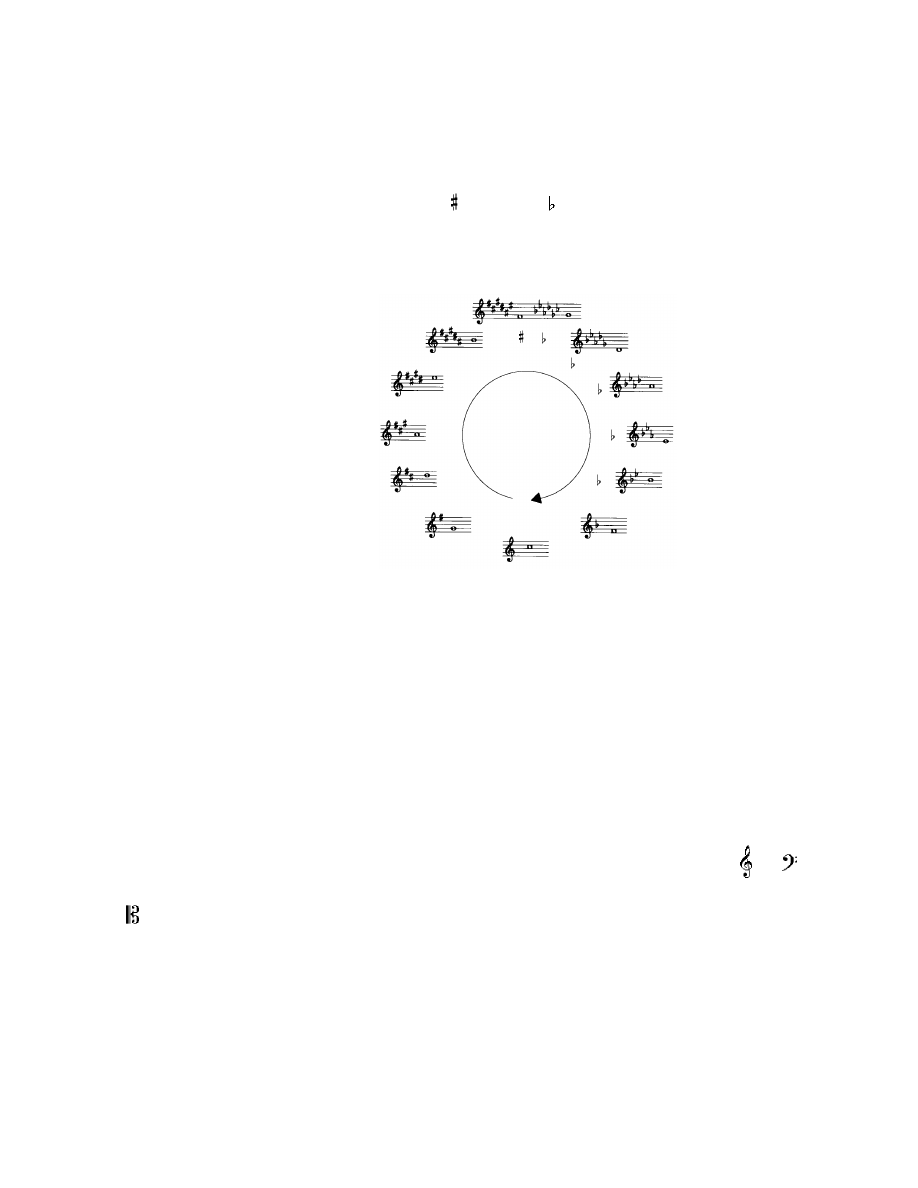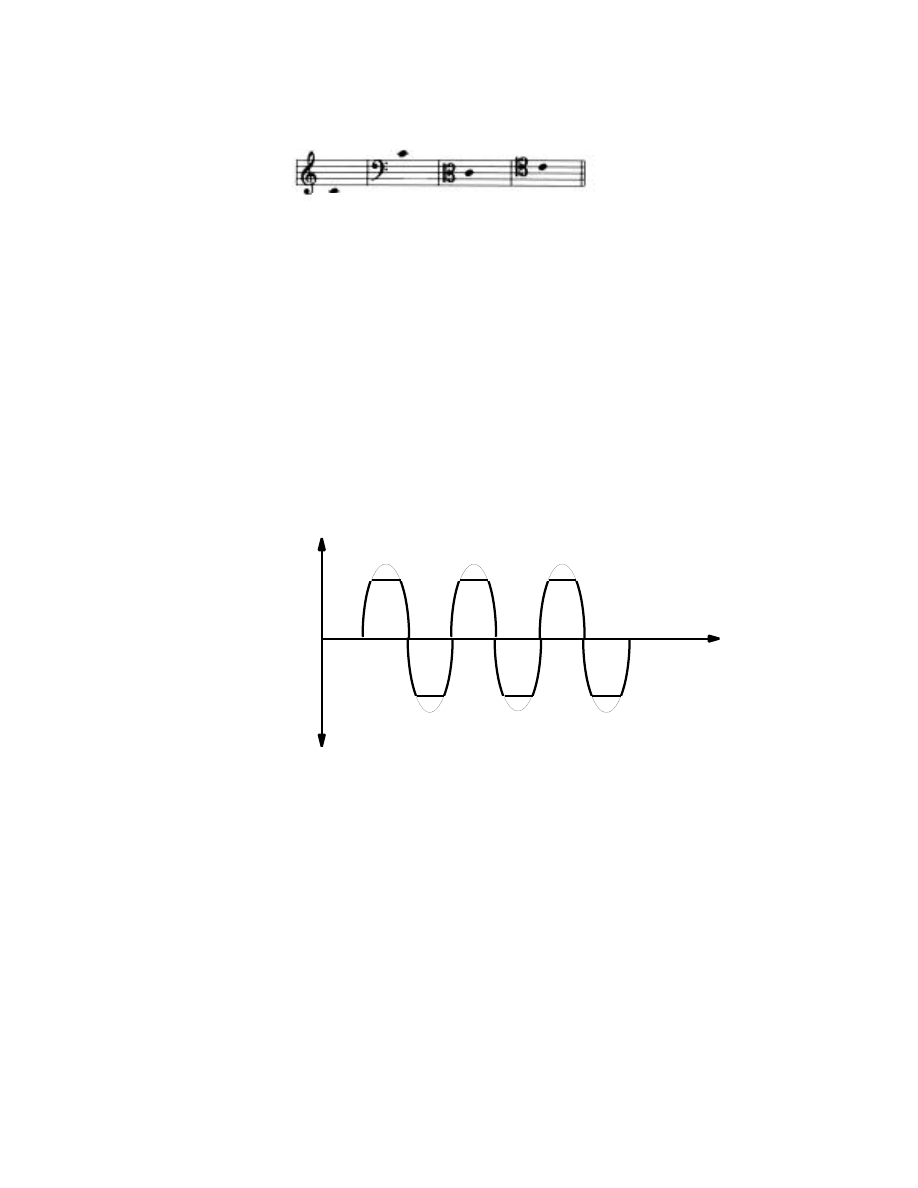ВУЗ: Казахская Национальная Академия Искусств им. Т. Жургенова
Категория: Учебное пособие
Дисциплина: Не указана
Добавлен: 03.02.2019
Просмотров: 12323
Скачиваний: 6

C
channel bit rate: The actual bits being read from a digital medium are greater than the
number strictly required to encode the audio signal. This is because of ECC and synchroni-
zation bits, etc. For example, with a CD, the audio bit rate is 1.41Mbps, but the channel bit
rate is actually three times as high, 4.32Mbps.
channel insert: An insertion point in a mixer channel which opens up the signal path and
allows an outboard device to be inserted in-line. The output point (the place where the signal
is routed to the outboard device) is called the channel insert send, and the place where the ef-
fected comes back into the mixer is called the channel insert return. The actual point at which
the channel signal path is broken with the insert connection is not standard among all con-
soles. Some are between the preamp and equalizer sections, some after the equalizer, but
before the fader, and some are post-fader. Some are switchable with an internal jumper or
other modification. If, for example, the channel insert send is post-fader, the fader setting
will affect the action of a compressor that is inserted into the channel’s signal path. On the
other hand, a post-fader insert is good when it is desirable to send a single channel’s signal
direct to a tape track, making the fader into a convenient record-level control. See normalled
connection.
channel message: A class of MIDI messages which only affect devices on a MIDI network set
to a particular channel, i.e., all non-system messages. Channel messages may be of either
Channel Mode or Channel Voice type. See MIDI.
channel mode: See MIDI mode.
channel path: The record section of the signal chain in a mixer. See also monitor path.
channel pressure: A type of MIDI channel message that is applied equally to all of the notes
on a given channel; the opposite of poly pressure, in which each MIDI note has its own pres-
sure value. Also called aftertouch, channel pressure is generated on keyboard instruments by
pressing down on a key or keys while they are resting on the keybed. Also called channel key
pressure.
channel separation: Channel separation refers to the amount of crosstalk between the chan-
nels of a stereo system. It is the inverse of interchannel crosstalk, as measured in decibels. A
small amount of crosstalk is equivalent to a large channel separation.
channel strip: One of multiple identical sections in a mixer from the mic preamp and phantom
power (if present) to the bus outputs, and typically includes the input pad, EQ, and signal
routing, including pan, effect sends and effect returns, and main channel fader, and optionally
an automation interface. There is one channel strip per mixer input.
Channel Voice: A classification of MIDI channel message relating specifically to a musical
performance, where features of the performance (notes, articulation, etc.) are individually
described by a unique message. Channel Voice messages include Note On, Note Off, Poly-
phonic Key Pressure, Channel Pressure, Program Change, Pitch-bend, and Controller
Change. These messages all include a specific channel number, allowing similar messages to
address different devices on the same MIDI network. The message will only be implemented
by a receiving device whose channel number matches that of the message.
channelize: See MIDI mapping.

C
characteristic impedance: See termination.
charge (C): Charge is a measure of the quantity of electricity and its unit is the coulomb. In
an electrical circuit, charge consists of negative charges, or electrons. A positive charge can
be thought of as simply an absence, or deficiency of electrons. Charge is what is moving in
an electric current. See ampere.
chart: (1) A musical score or arrangement. The term is used both to designate the conduc-
tor’s full score, or any band part. (2) A list of current hit singles or albums.
chase: (1) The process whereby a slave device attempts to sync to a master clock. (2) In MIDI
parlance, to chase means, upon playback, to look backward to earlier MIDI events to see if
there were any program or channel change messages prior to the playback point which
would affect playback. See controller chasing.
chase-lock: A type of controller for a video or audio recorder that will listen to the SMPTE
timecode signal from the master clock device and will adjust its own speed to find the correct
time and then will lock into synchronization with the external timecode. Unlike sync-lock,
chase-lock controllers respond to changes in timecode sequence.
chasing: See controller chasing.
chassis ground: The practice of connecting the signal ground of a device to the rack rails or
other common grounding location on a multi-component electronic system.
chatter: When the input signal level to a noise gate hovers near the threshold level, the gate
may be unsure if it should be open or closed. It may rapidly open and close, resulting in the
audio cutting in and out; this is known as the gate “chattering.” To correct this problem,
adjust the threshold setting to be slightly lower or higher.
checksum: A number derived from arithmetical actions on data, used to check that data has
not been corrupted after transmission or recording and replay.
chip: (1) In vinyl record production, the thin thread of acetate lacquer that is carved out of
the master disc by the cutting stylus. Also called swarf. (2) A slang term for integrated circuit.
chirping: An effect caused by the overuse of single-ended noise reduction systems whereby the
low-level signals take on an electronic, “ringing” character, known as chirping. If the signal
is very noisy, the noise floor itself begins to sound chirpy, which can be more annoying than
the original, broad-spectrum, noise.
chord: The playing of multiple notes simultaneously. The opposite of an arpeggio. See inver-
sion.
chorus: (1) A regularly repeated section of a song or other musical composition. (2) A group
of singers, also called a choir.

C
chorusing: A type of audio effect in which a delayed (30-40ms) or detuned copy of a signal is
mixed with the original signal. The mixing process changes the relative strengths and phase
relationships of the overtones to create a more complex sound. See ADT, double-tracking. The
mixture becomes extremely complex as the relative phases of the signals cause partial can-
cellation and reinforcement over a broad frequency spectrum. The simplest way to achieve
chorusing is to detune one synthesizer oscillator from another to produce a slow beating be-
tween them. See comb filter.
chromatic: Pertaining to the full twelve-note scale, as opposed to the eight-note diatonic
scale.
Cinema Digital Sound (CDS): A new system of digitally recording motion picture sound
format introduced by the Optical Radiation Corporation, a division of Kodak, in 1990, for the
film “Dick Tracy” for digital sound on 35mm or 70mm film formats via a laser beam, which
reportedly combines the dynamic and frequency ranges and low distortion of the CD on six
discrete channels. Five channels encompass the full audio bandwidth and the sixth is desig-
nated a subwoofer channel, containing only the lowest frequencies. The CDS-encoded film
is capable of being shown with conventional stereo optical sound, but requires a special
sound system to reproduce the six channels digitally. First used in 1990, this format lasted
only two years and is now obsolete. See AC-3, 5.1.
CinemaScope: The trademark of a widescreen camera system developed by Twentieth
Century Fox, the first true stereophonic motion picture sound system which had the
soundtracks on the same film with the picture. First used in 1953, CinemaScope was
responsible for popularizing the anamorphic film format.
Cinerama: A widescreen system comprising three 35mm cameras/projectors running in
interlock with 7-track mag film.
CIRC: Cross Interleaving Reed-Solomon Code. The combined error detection and correc-
tion scheme used in CDs. See interleaving.

C
Circle of Fifths: Also known as the Cycle of Fifths. A way of thinking of the twelve major
and minor keys as a circle, arranged in steps of a fifth, which can be read in either direction.
Starting from C
maj
and proceeding clockwise, the key signature of each new key gains one
sharp until F
maj
is reached. At that point, F becomes G
ma
j and the cycle continues, remov-
ing a flat at each step until back to C. If one goes counter-clockwise, the circle is a series of
perfect cadences, with each new tonic key becoming the dominant of the next. For this rea-
son, the Circle of Fifths is often used for modulation(3), especially to or back from a remote
key, i.e., a key on the far side of the circle.
Circle of Fifths
B
A
D
G
C
F
F =G
D
A
E
B
E
circuit: A complete path that allows electrical current from one terminal of a voltage source
to the other terminal.
circumaural: A headset with a large cushion which surrounds the ear to exclude external
noise, unlike supraaural or intraaural designs.
CIT: See SDMI.
clangorous: Containing partials that are not part of the natural harmonic series, i.e., partials
which are not whole-number multiples of the fundamental frequency. Clangorous tones often
sound bell-like.
clef: In written music, a symbol placed at the beginning of the stave which assigns a pitch to
a specific line on the stave, and by inference, to all of the other lines and spaces. Three clef
symbols are commonly used, derived from the medieval forms of the letters G ( ), F( ), and
C( ).

C
Four Clefs Showing the Position of Middle C
click track: A click track records a series of clicks, like a metronome, on one channel of a
multitrack tape recorder or one channel on a MIDI sequencer. The click track is used to syn-
chronize the recording of subsequent tracks by playing it back via headphones to the musi-
cians while they are overdubbing the added tracks.
clipping: A distortion caused by cutting off the peaks of audio signals. Clipping usually oc-
curs in an amplifier when its input signal is too high or when the volume control is turned
up too high. A clipped waveform contains a great deal of harmonic distortion and sounds
very rough and harsh. Hard clipping results in very sharp edges on the waveform, producing
the maximum amount of high-harmonic content. Soft clipping produces rounded edges of
the clipped waveform and is much less grating on the ears and tweeters than hard clipping
as it contains much less very high-frequency energy. Different amplifiers produce different
clipping effects; tube amps often produce soft clipping. See full code, digital black.
Amplitude
Waveform
Clipped
clock: (1) Any of several types of timing control devices, or the periodic signals that they
generate. Clock pulses are usually derived from crystal-controlled oscillators. See also MIDI
Clock, master clock. (2) In recording sessions for jingles or film scores, a stopwatch.
clock noise: An artifact of digital-to-analog conversion that creates staircase-like changes in
voltage produced by the converter. Most clock noise is caused by shifts in the zero-crossing
times. See quantization noise, reconstruction filter.
clock reference: See master clock.
clock resolution: The precision (measured in ppq) with which a sequencer can encode time-
based information. A sequencer’s internal clock is always set to some ppq value, and this
setting is one of the main factors that determine how precisely the sequencer can record
time-dependent information. The actual clock speed is usually determined by the bpm set-
ting. See MIDI clock.